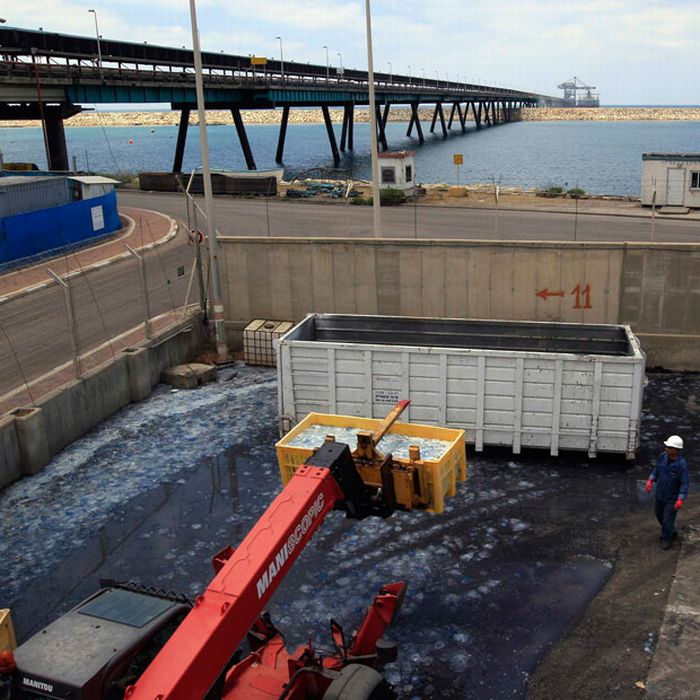|
|
Jellyfish Clog Water Supply, Coal-fired Power Station Orot Rabin, Hadera, Israel
|
In China, processed jellyfish are desalted by soaking in water overnight and eaten cooked or raw. The dish is often served shredded with a dressing of oil, soy sauce, vinegar and sugar, or as a salad with vegetables. In Japan, cured jellyfish are rinsed, cut into strips and served with vinegar as an appetizer. Desalted, ready-to-eat products are also available.
Fisheries have begun harvesting the American cannonball jellyfish, Stomolophus meleagris, along the southern Atlantic coast of the United States and in the Gulf of Mexico for export to Asia.
• In biotechnology
In 1961, Osamu Shimomura of Princeton University extracted green fluorescent protein (GFP) and another bioluminescent protein, called aequorin, from the large and abundant hydromedusa Aequorea victoria, while studying photoproteins that cause bioluminescence by this species of jellyfish. Three decades later, Douglas Prasher, a post-doctoral scientist at Woods Hole Oceanographic Institution, sequenced and cloned the gene for GFP. Martin Chalfie of Columbia University soon figured out how to use GFP as a fluorescent marker of genes inserted into other cells or organisms. Roger Tsien of University of California, San Diego, later chemically manipulated GFP in order to get other colors of fluorescence to use as markers. In 2008, Shimomura, Chalfie, and Tsien won the Nobel Prize in Chemistry for their work with GFP.
|
|









